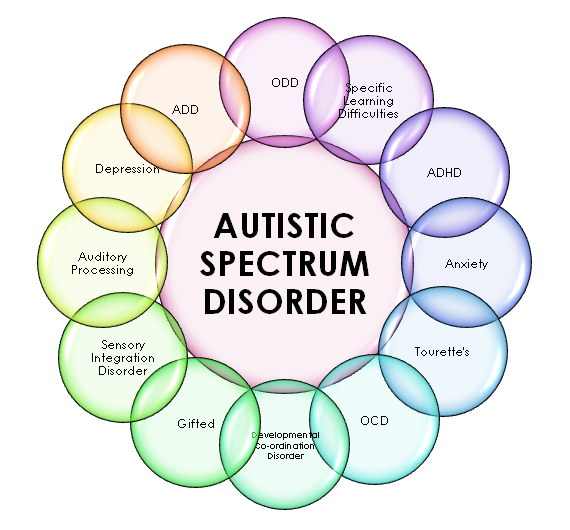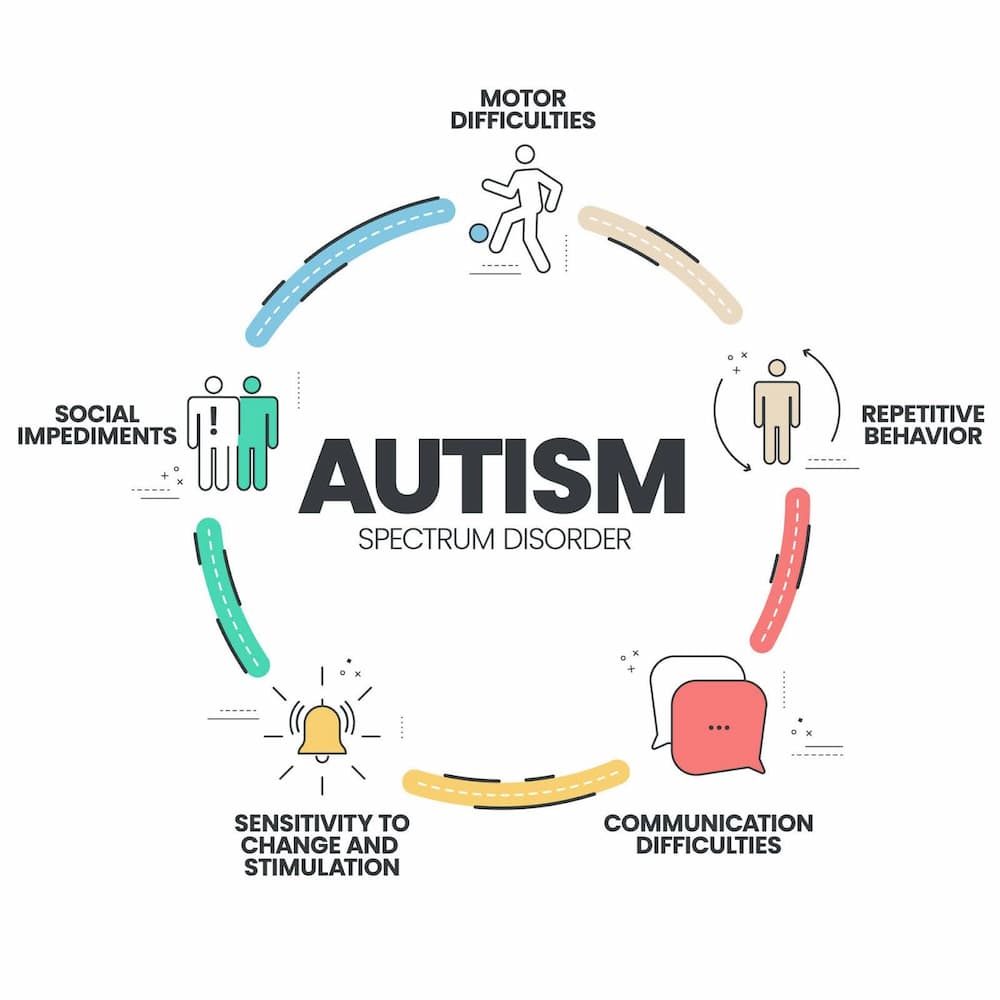Understanding Autism: A Comprehensive Overview to Signs and signs
Autism Range Problem (ASD) encompasses a vast variety of characteristics that can considerably influence an individual's social communications and daily performance. Recognizing the indicators and symptoms, such as difficulties with eye call, social communication troubles, and sensory sensitivities, is vital for early intervention. Recognizing these nuances not only help caretakers and educators in supplying appropriate support yet also promotes an extra comprehensive environment for people with ASD. As we discover the intricacies of autism, it becomes necessary to consider how these indications show up differently across the range and what effects they hold for effective treatment approaches.
Overview of Autism Spectrum Disorder
Defining Autism Range Problem (ASD) entails identifying it as an intricate neurodevelopmental problem identified by an array of obstacles in social communication, communication, and behavioral patterns. The term "spectrum" reflects the vast irregularity in signs and symptoms and their extent, which can vary substantially from one person to one more. ASD usually materializes in early childhood, although some people might not get a diagnosis until later on in life.
Aspects influencing the development of ASD consist of hereditary tendencies and environmental variables, although the precise causes continue to be under examination. Diagnosis frequently relies upon behavior evaluations, as there are no conclusive medical examinations for ASD. Early intervention is critical and can substantially enhance outcomes, concentrating on improving communication abilities, social interactions, and flexible habits.
Individuals with ASD might also show distinct strengths, such as exceptional interest to detail or details areas of proficiency. Recognizing the multifaceted nature of ASD is essential for fostering an inclusive setting that fits neurodiversity. Proceeded research is crucial for developing reliable treatments and support group, making it possible for individuals with ASD to prosper and fulfill their prospective within culture.
Common Indications of Autism
Identifying the usual indicators of Autism Spectrum Problem (ASD) is essential for early identification and treatment. These indicators can vary commonly in extent and presentation, however specific characteristics are often observed in people with ASD.
Among the most prevalent indications is a significant trouble in preserving and developing eye call. People might also exhibit restricted rate of interest in social communications and reveal a choice for singular play. Repetitive behaviors, such as hand-flapping, rocking, or spinning items, commonly arise early in childhood years. Additionally, some children may develop strict routines and become distressed if these routines are disrupted.
Sensory sensitivities are likewise common; individuals might panic or underreact to sensory stimulations, such as noises, textures, or lights. autism. Language development can be irregular, with some youngsters displaying delayed speech or using language in uncommon means, consisting of echolalia-- repeating sentences or phrases heard elsewhere
It is important to keep in mind that not every person with ASD will present all these indications, and the degree of these behaviors can vary substantially. Early recognition permits for timely support and sources, enhancing the lifestyle for those on the range.
Social Communication Obstacles
Social communication challenges are a characteristic of Autism Spectrum Problem (ASD), affecting an individual's capability to engage effectively with others. These troubles can manifest in numerous methods, including obstacles in starting and maintaining discussions, understanding social signs, and responding suitably in social interactions.
People with ASD may fight with nonverbal communication, such as eye call, facial expressions, and body movement. This can lead to misconceptions, as their communicative my blog intent may not be properly interpreted by others. They may locate it difficult to comprehend the subtleties of tone and context, which are vital for reliable communication.
In group setups, people with ASD may feel overwhelmed and might not know exactly how to sign up with in discussions (autism). They may additionally exhibit atypical conversational patterns, such as monologuing regarding specific rate of interests without identifying social reciprocity
Furthermore, these difficulties can cause social seclusion or difficulties in developing connections, as peers might misunderstand their actions or communication style. Understanding these social communication difficulties is critical for fostering supportive environments that promote social skills advancement and improve the high quality of communications for people on the autism range.
Sensory Responses and sensitivities
Many individuals with Autism Spectrum Disorder (ASD) experience heightened investigate this site sensory level of sensitivities that can significantly impact their day-to-days live. These level of sensitivities might show up as over-responsiveness or under-responsiveness to sensory stimulations, consisting of noises, lights, structures, tastes, and smells. A person with ASD may locate day-to-day noises, such as a vacuum cleaner or crowded settings, extremely stressful, leading to stress and anxiety or meltdowns. Alternatively, some might display an indifference to pain or severe temperatures, which can pose safety and security problems.
Sensory processing distinctions in individuals with ASD can additionally impact their capacity to engage in routine tasks and social interactions. A child that is Look At This delicate to touch may stand up to physical affection or prevent certain garments textiles. Additionally, a choice for certain structures or preferences can limit nutritional alternatives and create obstacles throughout mealtimes.
Recognizing these sensory sensitivities is important for acknowledging the one-of-a-kind experiences of people with ASD. Recognition of their sensory accounts can foster better communication and support techniques, producing an atmosphere that fits their demands and boosts their lifestyle. Inevitably, recognizing sensory level of sensitivities is a critical component of comprehending the broader spectrum of autism.

Supporting Individuals With Autism
Efficient assistance for individuals with Autism Spectrum Condition (ASD) is critical for enhancing their general health and promoting self-reliance. Assistance methods ought to be customized to fulfill the one-of-a-kind needs of each individual, considering their staminas and obstacles.

Social abilities training can also play a pivotal role. autism. Engaging individuals in group activities or role-playing situations can improve their capacity to browse social communications. In addition, it is important to educate member of the family, caregivers, and peers about ASD to foster a supportive and comprehensive area
Verdict
By cultivating enhanced communication and social abilities, individuals with autism can browse their atmospheres much more efficiently. Eventually, enhanced recognition and support can significantly boost the high quality of life for those affected by ASD.
Autism Range Disorder (ASD) incorporates a broad array of attributes that can significantly influence an individual's social communications and daily performance.Individuals with ASD may battle with nonverbal communication, such as eye call, facial expressions, and body language.Several individuals with Autism Range Disorder (ASD) experience increased sensory sensitivities that can substantially influence their everyday lives.Sensory handling differences in individuals with ASD can additionally affect their capability to involve in social interactions and regular tasks.Understanding these sensory level of sensitivities is essential for acknowledging the one-of-a-kind experiences of individuals with ASD.